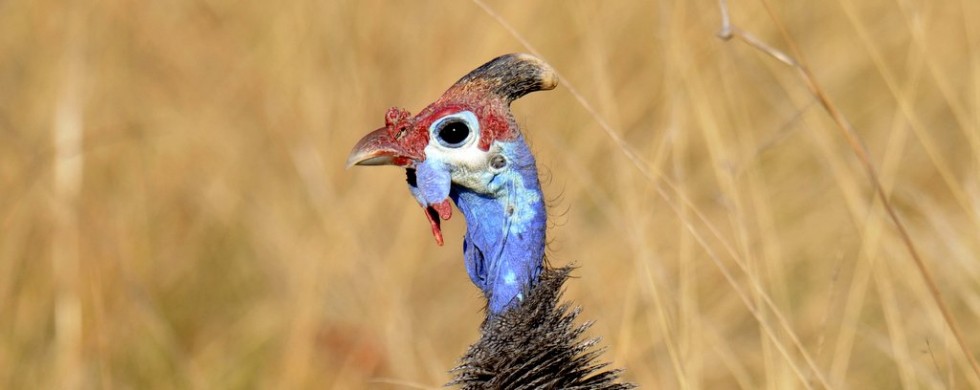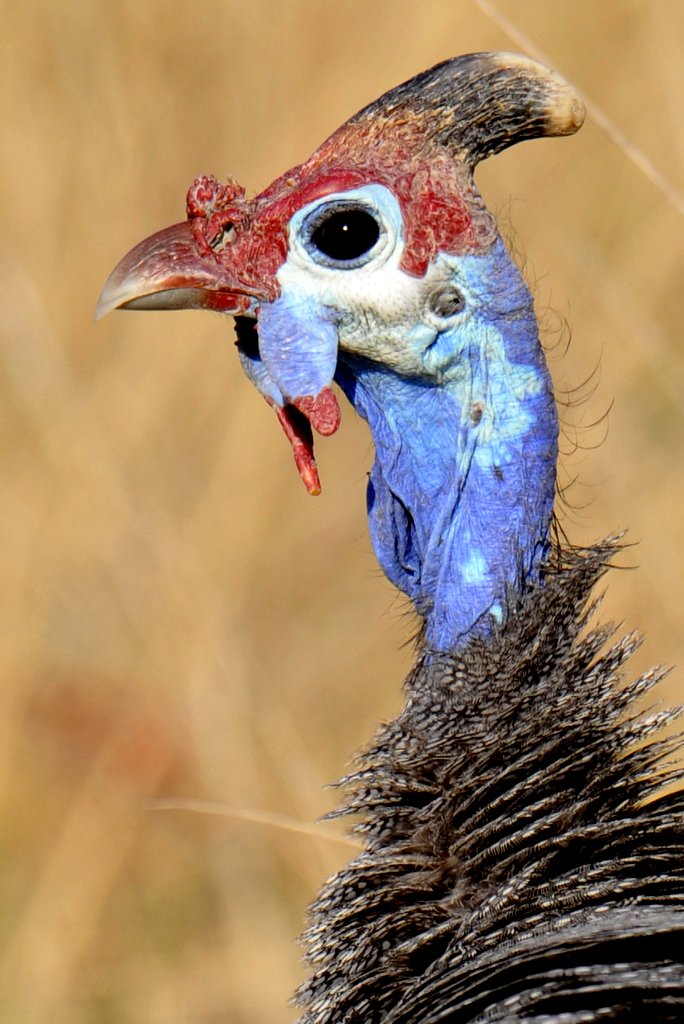
30
2013The Bold and (not so) Beautiful
Shot of the Month – June 2013
 I love this shot. The image is r-a-z-o-r sharp, which is the holy grail for photographers (or at least a major component of said grail). I can see every freakin hair on this fella’s neck. The background is nicely blurred so the subject, a Helmeted Guineafowl (HG), really pops. I find the image to be a fascinating yet hard-to-categorize mix of textures, shapes, and colors. The spiky neck feathers add a nice ruff flair. The crazy colors (did he tie-dye that neck?); the red head, the jazzy dual-hued, yet color-coordinated, wattle things. The aforementioned neck hairs. The dramatic head crown doodad. The red stuff on the nose. Wow. Put it all together and the image stops you in your tracks. It certainly makes for compelling viewing, albeit, perhaps not for a long time. Warm and cuddly he ain’t.
I love this shot. The image is r-a-z-o-r sharp, which is the holy grail for photographers (or at least a major component of said grail). I can see every freakin hair on this fella’s neck. The background is nicely blurred so the subject, a Helmeted Guineafowl (HG), really pops. I find the image to be a fascinating yet hard-to-categorize mix of textures, shapes, and colors. The spiky neck feathers add a nice ruff flair. The crazy colors (did he tie-dye that neck?); the red head, the jazzy dual-hued, yet color-coordinated, wattle things. The aforementioned neck hairs. The dramatic head crown doodad. The red stuff on the nose. Wow. Put it all together and the image stops you in your tracks. It certainly makes for compelling viewing, albeit, perhaps not for a long time. Warm and cuddly he ain’t.
Helmeted Guineafowl are naturally found in Sub-Saharan Africa though domesticated versions can be found in the US, England, and just about anywhere people can raise chickens. Wild varieties of the helmeted Guinea fowl have been introduced into the West Indies, Brazil, Australia, and southern France.
HG are members of the order Galliformes; the same order that includes turkeys, grouse, chicken, quail, ptarmigan, partridge, pheasant, and Cracidae.
Accordingly, HG spend much of their time scratching around on the ground in flocks of up to 25 birds looking for food rather, well, chicken-like. They can walk 6 miles or more a day. HG are similar in size to grouse or partridges, and like them, typically fly for only short distances and glide for most of the time in the air after the initial burst from cover. When in danger their preferred escape strategy is to run for it and only take flight if absolutely necessary. However, HG do roost in trees at night and during the heat of the day.
There are about 7 species of Guineafowl but only the Helmeted variety has the horn-like casque on top.
The Helmeted Guineafowl, I tip my hat to your bold if not totally beautiful style.
